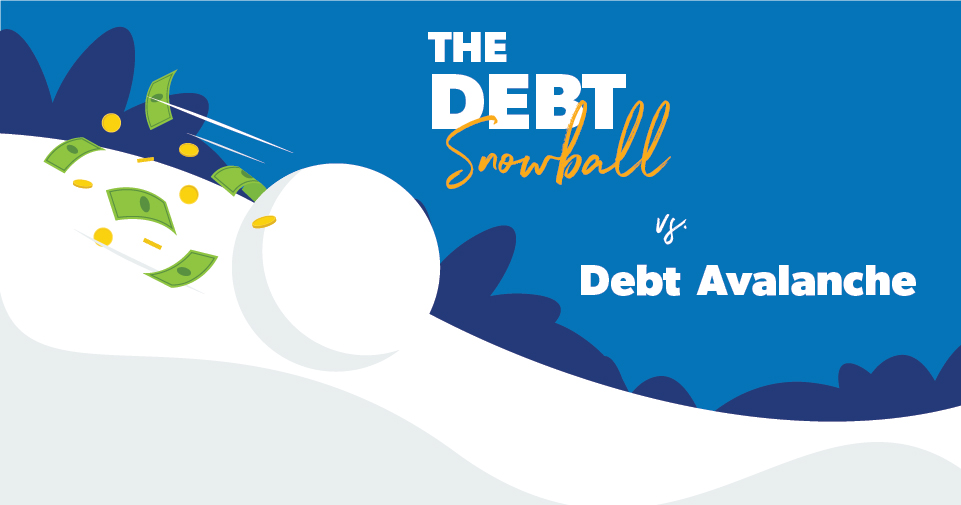
Debt can often feel overwhelming, but the right repayment strategy can make all the difference in getting back on track financially. Two of the most popular methods for paying off debt are the Debt Snowball and the Debt Avalanche strategies. Both have their merits, but understanding how they work and which might suit you best is key to making informed financial decisions. Let’s dive into each method, their benefits, and how to decide which is right for you.
The Debt Snowball Strategy
The Debt Snowball method focuses on tackling your smallest debts first, regardless of their interest rates. Here’s how it works:
- List all your debts from smallest to largest balance.
- Make minimum payments on all your debts except the smallest.
- Put extra money toward paying off the smallest debt as fast as possible.
- Once the smallest debt is cleared, move on to the next smallest debt, and so on, until all debts are paid off.
Why People Choose the Debt Snowball:
- Psychological Wins: Every time you pay off a debt, you get a confidence boost, reinforcing your momentum.
- Quick Wins: You’ll see progress faster as smaller debts are paid off early, making it feel like you’re making significant strides.
- Motivation Boost: The satisfaction of crossing off debts can keep you energized and committed to your financial goals.
Downsides of the Debt Snowball:
- Potentially More Interest: By focusing on the smallest debts, you might end up paying more in interest over time, especially if your larger debts have higher interest rates.
The Debt Avalanche Strategy
The Debt Avalanche method prioritizes paying off debts with the highest interest rates first, saving you money in the long run. Here’s how it works:
- List all your debts from highest to lowest interest rate.
- Make minimum payments on all your debts except the one with the highest interest rate.
- Focus extra money on paying off the debt with the highest interest.
- Once the highest-interest debt is paid off, move to the next highest, and continue the process.
Why People Choose the Debt Avalanche:
- Minimized Interest Payments: By targeting high-interest debts first, you reduce the overall amount of interest you’ll pay.
- Financial Efficiency: The Debt Avalanche is the most cost-effective method mathematically, helping you save money over time.
Downsides of the Debt Avalanche:
- Slower Progress: If your highest-interest debt is also one of your largest, it may take longer to pay it off, which can feel discouraging.
- Less Immediate Satisfaction: Without the psychological wins of clearing smaller debts, it can be harder to stay motivated, especially early in the process.
How to Choose the Right Strategy for You
Both methods are effective, but the best one for you depends on your financial situation and personality. Here’s how to decide:
- If you need motivation and quick wins: The Debt Snowball might be a better choice, especially if paying off debt has been a struggle in the past. The psychological boost of knocking out small debts could be what keeps you going.
- If you want to save the most money over time: The Debt Avalanche is the optimal choice if you’re more focused on efficiency and minimizing interest payments. This method will help you pay off debt faster overall, though it requires patience to see the long-term benefits.
Can You Combine Both Strategies?
Some people find success by blending the two approaches. For instance, they might start with the Debt Snowball method to build momentum and then switch to the Debt Avalanche once they’ve eliminated smaller debts. This hybrid approach provides both quick wins and long-term financial efficiency.
Final Thoughts: Which Strategy Works Best?
Both the Debt Snowball and Debt Avalanche methods have their advantages, and neither is universally better than the other. The right approach depends on your personal preferences and financial priorities.
- If you’re someone who thrives on small victories, the Debt Snowball will likely give you the motivation you need to stay on track.
- If you’re focused on saving as much money as possible and are willing to be patient, the Debt Avalanche is your best bet.
Ultimately, the most important thing is to pick a strategy that you can stick with and consistently work toward being debt-free. Whether you choose the Debt Snowball or Debt Avalanche, making progress toward your financial goals is what matters most.
